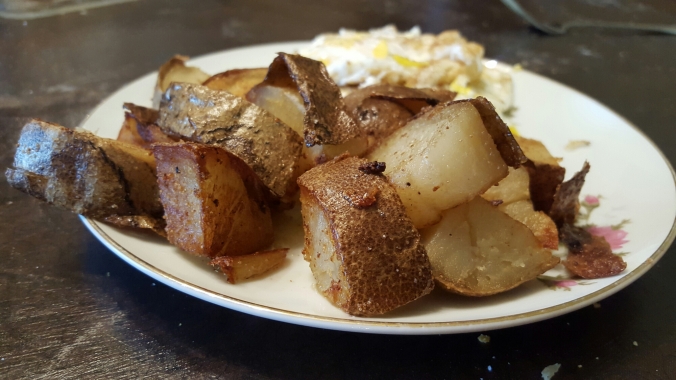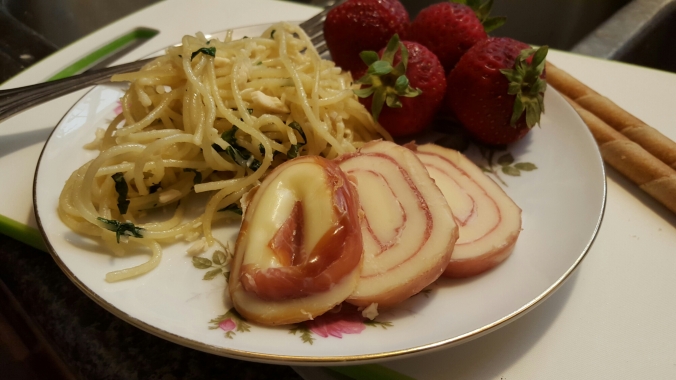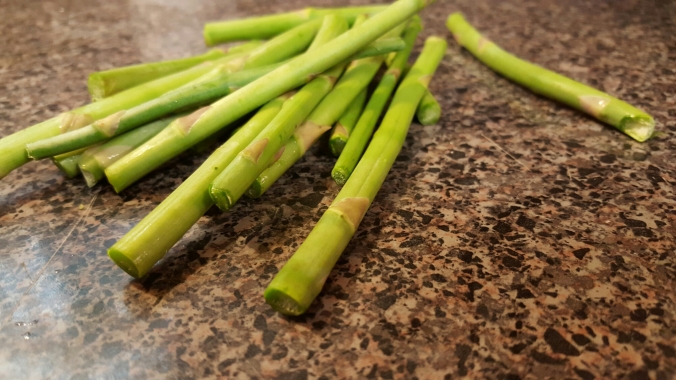Sometimes living in rural Northeast Texas has its downsides. For example, we don’t have a really good Asian grocery around here, and I need to buy a good deal of specialty items online.
At some point, I accidentally fell in love with real noodles. Pho is a favorite of mine, with its rich and gelatinous broth and depth of flavor. It took years for my local grocer to start carrying something remotely resembling decent rice noodles – labeled stir fry noodles there. Now that we live on 13 acres even further from town, if you run out, it will be a while before you get it again.
I really wanted noodles today.
So, this is not authentic pho. I’m going to tell you that right now because there are many sources out there to teach you how to make the real thing. This is going to tell you how to make a really good substitute. It is warm, fragrant, inviting and tasty, but it is not authentic Vietnamese cuisine.
First of all, you obviously need some form of noodles. You can use pre-packaged ramen; just throw away that ridiculous, MSG-laden spice packet. Right now, go. You don’t need that excess sodium anyway.
The base for this bowl of noodles is gelatin-rich chicken stock, just like the traditional version. If you skip this step, your quality goes down dramatically. I’ll share a post later on various stock methods. Regardless, the stock will be fortified with various flavors based on traditional pho ga seasoning; the difference is form.

Although not authentic, this recipe calls for powdered ginger, which is more economical for nominal use. I am able to obtain coriander seed and star anise in both small Mexican markets and in the Mexican section of my grocery; they come in little, inexpensive packets. If you can find fish sauce, it will be with the Asian food; anchovy paste is typically with the pasta sauce.
Put the pan on the stove and turn your burner on, about medium heat. Toasting the spices in a dry pan will add tremendously to the taste of your dish. Start by toasting slivers of fresh onion first; these take longer to cook and you don’t want to scorch your spices. After you have lightly “blackened” (really more of a dark brown) your onion, season the bottom of your pan with about a half-tablespoon of coriander seeds, a few star anise, a healthy pinch of powdered ginger, and some powdered garlic if you like it. Stir contantly. Do not leave the stove. Once everything is dark brown and fragrant, immediately add your chicken stock. You will use at least a pint of stock. I use about a quart to feed myself and children at lunch.
If you have leftover bits of cooked chicken, go ahead and crumble them in now. Simmer for at least ten minutes to let the flavors meld. Really, twenty would be better. I have to let my stock melt because it has such a high gelatin content, so the spices really steep during the reheating. Salt to taste during this phase. This is also when you would add a dash of fish sauce.
Now, traditional pho would be poured over a bowl of hot, fresh rice noodles, but for ramen, we want to cook the ramen in the soup itself. I was short on stock this time, so I made up the difference with some filtered water. After your soup has simmered a bit, go ahead and add your noodles and fresh green herbs.
At this point I have to admit that we were (sadly) out of cilantro, so I used fresh basil. Fresh basil is usually a garnish in this dish, so it doesn’t ruin it. I also included a little basil-and-oil cube from the freezer to boost the flavor. Simmer until your noodles are mostly tender. Ramen tends to become mush when overcooked, so remove them from heat before that happens.
Pour up your soup into bowls and pass accompaniments. Traditional pho additions include: fresh basil leaves, bean sprouts, hot sauce or chili oil, fish sauce, limes or lime juice, slice jalapeño or other green hot pepper, and paper-thin onion slices soaked in ice-cold water.
I was out of fish sauce, so my bowl included a few drops of red chili oil, a tiny pinch of hondashi granules, and three pea-sized dots of anchovy paste.
It was glorious. It was not authentic, but it was comforting and perfect all the same.
















You must be logged in to post a comment.